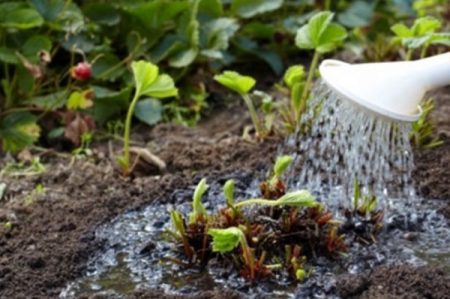
Strawberries are grown in garden plots to be able to enjoy tasty vitamin berries in the summer and make fragrant preparations for the winter. A good harvest is the result of invested labor, therefore berry care includes the implementation of certain necessary measures.
One of them is fertilizing in the spring, since the foundation of a regular high-quality crop is laid precisely in the spring. Applied fertilizer in time will help to develop a strong healthy strawberry bush with large and sweet berries.
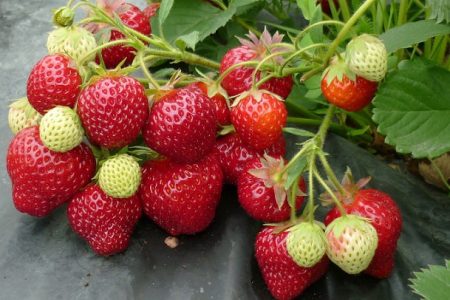
Content
Preparatory work
In the spring, after the snow has melted and the topsoil has dried up, you need to prepare strawberry planting for all the work necessary for it. Initially, plants are freed from winter shelter and the remnants of dry foliage, then the soil is loosened, weeds and plant roots in the soil are removed.
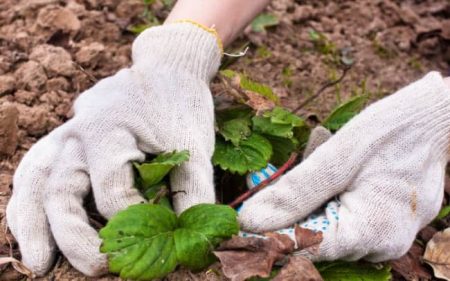
It is imperative to conduct a visual inspection of each bush - cut dry leaves and tops, the neck of the strawberry should be 4-5mm higher than the soil level (its deepening can lead to rotting of the roots).
When to feed
Throughout the season, mandatory feeding is performed in the following periods:
- April - the first of May - the application of fertilizers stimulates the growth of shoots and leaves;
- July, the end of fruiting - fertilizers are necessary for the formation of new roots, contribute to the laying of flower buds;
- mid-September - nutrients will help the plant gain strength before wintering.
Spring fertilizer
In the spring, when the plants wake up, an active build-up of green mass begins, and top dressing affects the formation of large healthy leaves, strong, dense stems. Their condition, in turn, is the key to the harvest of large and high-quality fruits.
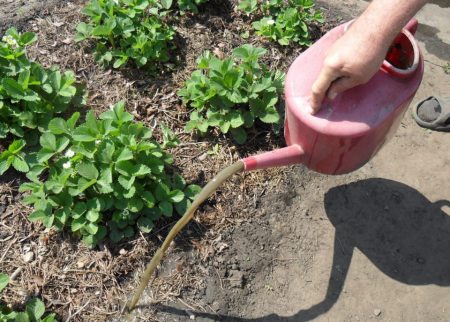
A necessary component for the growth of the aerial part is nitrogen, the source of which is humus, bird droppings, mullein, and mineral fertilizers. Along with nitrogen, micronutrients are an essential component of fertilizing, making it easier to endure drought, prolonged rains, low temperatures and to resist infections. Their presence accelerates growth, the formation of buds, the ripening of fruits with good taste.
When to apply fertilizer:
- at the first visit to the garden plot, when the snow has not melted yet, scatter mineral fertilizers and ash directly in the snow - having dissolved, together with melt water, they will go to the ground;
- if the first visit occurred later, when the soil has dried up, add mineral fertilizers to the soil when loosening, then water the plantings (you can immediately use fertilizers in liquid form);
- in the case when the land is dry and there is little water on the site, foliar top dressing is carried out on the leaves or fertilizers are applied before the rain.
Natural fertilizer
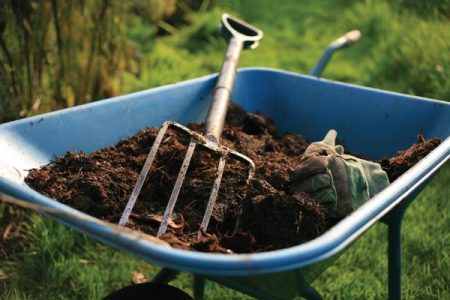
Top dressing based on natural compounds without the use of chemicals is very popular due to the availability and low financial costs.
Mullein dressing
Mullein (manure) of two types can replace chemical fertilizers with nitrogen:
- a mixture of clean manure with straw or peat (litter mullein), rich in potassium, phosphorus, nitrogen;
- clean manure (litterless mullein), which contains 50-70% nitrogen.
The clean manure option is preferred because of its high nitrogen content. Based on it, an infusion is prepared: a bucket, 1/3 of the volume, is filled with mullein and filled with water, the infusion is fermented under the lid (warm) for 5-7 days.
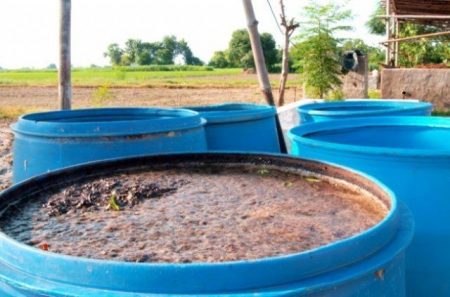
It is necessary to use the infusion in the solution (1 liter of infusion + 10 liters of water), pouring 500 ml of liquid onto one bush.
Watering from above (from a watering can, spray) helps protect against fungal infections (powdery mildew, spotting).
Chicken Feeding
Chicken droppings contain 3-4 times more nutrients than other natural fertilizers. A solution based on it is a fast-acting organic fertilizer that promotes the propagation of necessary microorganisms in the soil.
You can make an infusion of fresh chicken manure in the same way as a mullein infusion, but to prepare the solution, a smaller amount of infusion is taken - 500 ml. Pour 500 ml of solution onto the bush. Failure to comply with the norms of fertilizer application can lead to the death of the plant.
When using the litter purchased in the store in dried form, focus on the attached instructions.
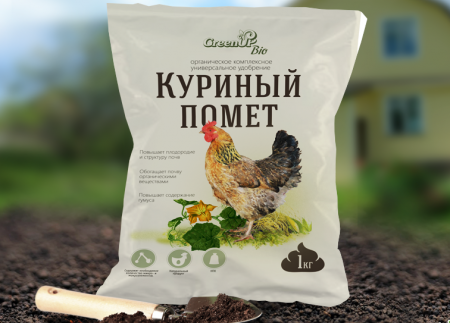
Humus dressing
Humus is manure aged 1-2 years. Compost can also be considered humus, well-rotted litter for poultry, rotted leaves. Humus contains large quantities of nitrogen, so its use is necessary for spring feeding.
Humus should be scattered across the ridge between the strawberry bushes, covering the bare roots. This fertilizer is especially relevant for strawberries at the age of 2-3 years, when the bushes are above the surface of the soil like bumps.
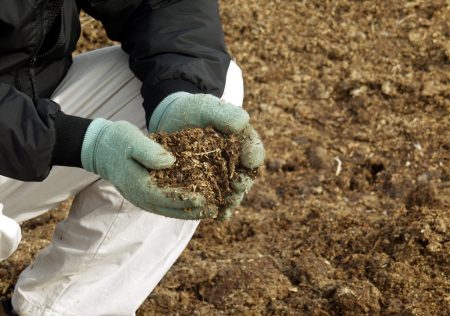
Feeding with wood ash
Wood ash contains micro and macro elements necessary for the growth of strawberries, but it contains no nitrogen. Therefore, spring top dressing with ash should be combined with nitrogen top dressing (mullein, litter, ammonium nitrate, urea).
In this case, one nuance must be taken into account - with the simultaneous application of ash, which is an alkali, and nitrogen fertilizers, the reaction of the conversion of nitrogen to ammonia, which refers to volatile compounds, occurs.
How to feed with ash:
- stir 1 glass of ash in 10 l of water and, until it settles to the bottom, pour strawberry bush under the root (500 ml);
- watering from a watering can to wet the leaves, then immediately spray the ash through a sieve onto the leaves - part of the ash will be absorbed, and part, falling to the ground, will fall into the ground.
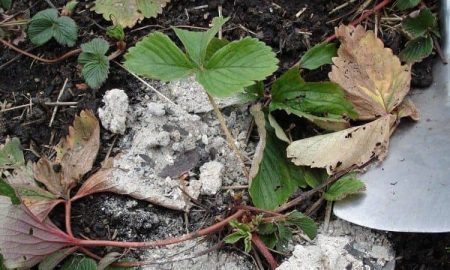
Fertilizers based on pharmaceutical preparations
At home, there are always funds and preparations on the basis of which you can independently prepare effective and safe fertilizers for strawberries.
Fertilizer with ammonia
Ammonia is an excellent fertilizer containing nitrogen compounds (ammonia). In addition, its specific smell is not liked by pests of strawberries (strawberry weevil, larvae of the May beetle, aphids), and the disinfecting properties help fight fungal infections.
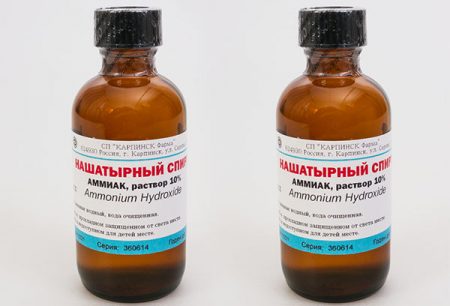
To prepare a solution for fertilizer, dilute 2-3 tbsp. l10% ammonia in 10 liters of water. Such a solution is suitable for watering the soil around the bushes and for processing the aerial parts of the plant.
Iodine-based fertilizer
Iodine is a necessary component for the life of all living organisms on Earth. It is also necessary for strawberries - it participates in nitrogen metabolism and, like an antiseptic, helps in the fight against diseases.
In practice, gardeners tested various solutions based on iodine - 3 drops - 1 / 2h. l for 10 liters of water. Each of the solutions benefits strawberries in processing for the prevention of fungal infections.
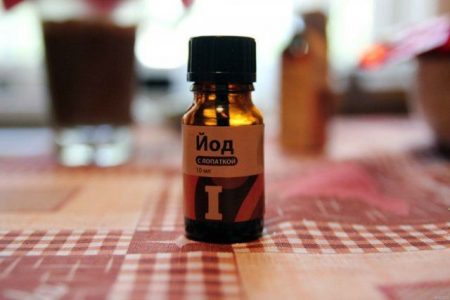
Folk methods of preparing fertilizers for strawberries
Fertilizer recipes that have been successfully used for decades and give a good effect are common among gardeners.
Fertilizer with sour milk
Strawberries love soil of medium acid composition and to achieve the desired acid balance, you can add sour milk to the soil. The amount of milk depends on the pH of the soil, but, most often, a solution is prepared in a ratio of 1: 2.
A solution of sour milk is either introduced into the soil, at a distance of 7-10 cm from the plant, or a strawberry bush is sprayed with it.
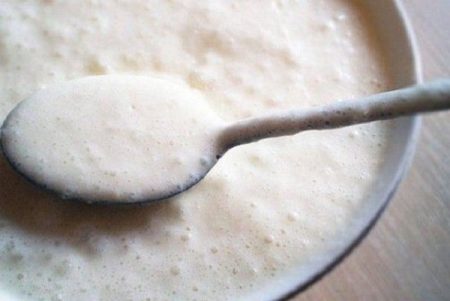
Yeast fertilizer
The use of yeast is an easy and simple way to improve the structure of the soil without the use of chemicals. Once in the soil, unicellular organisms make organics more accessible, contributing to its rapid decomposition. The composition of the soil becomes richer in amino acids, trace elements, organic iron, nitrogen, phosphorus. Yeast nutrition affects the growth of roots, which is important for the life of the plant.
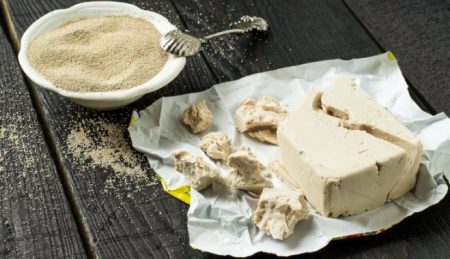
Making fertilizer from yeast:
- in a 3l jar, put 12g of dry yeast or 25g of raw, add 4-5 tbsp. l sugar and pour warm water to the shoulders;
- mix the ingredients well, remove the jar in a warm place;
- when foam appears, pour the wort into a bucket (10 l) and add warm water to the full volume;
- watering rate per bush (under the root) - 0.5-1l.
When applying yeast fertilizers, you must adhere to the rules:
- yeast does not breed at low temperatures, therefore, fertilizing with yeast is recommended at a soil temperature of at least + 20 ° C;
- the fermentation process takes potassium and calcium from the soil, so be sure to add ash to the soil after top dressing with yeast.
Bread-based fertilizer
The yeast in the bread acidifies the soil, helps the strawberry root system to strengthen and get enough nutrition.
Bread needs to be soaked for 6-8 days in water, then a 1:10 solution is prepared on its basis. Use as a yeast fertilizer.
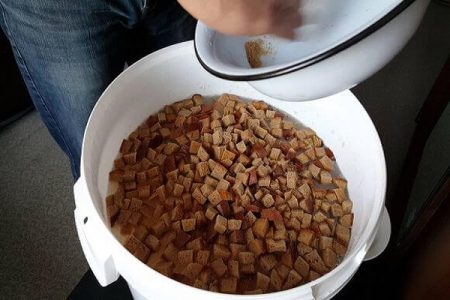
Nettle and weed infusion
To prepare this fertilizer, any weeds from the garden plot are suitable: nettle, sow thistle, clover, dandelions, wheat grass, etc. Put the grass in a container and fill it with warm water, insist for 7-14 days, mixing the contents every day. The fermentation process takes place with the formation of foam on the surface of the liquid. When the liquid becomes saturated dark color and there is no foam on its surface, the infusion is ready.
Use a strong infusion for watering in a 1:10 solution, for spraying - 1:20.
An infusion of one nettle is prepared similarly.
Strawberry dressing with mineral fertilizers
Mineral fertilizers differ in the rate of absorption of nutrients in the soil:
- highly mobile - phosphorus, potassium, magnesium, nitrogen;
- low mobile - boron, iron, manganese, copper.
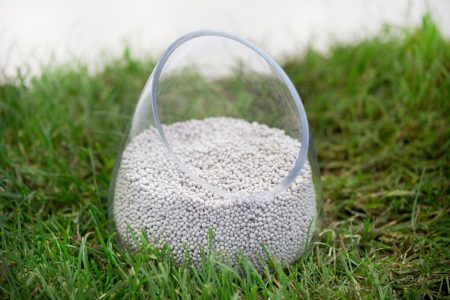
The yield increase is affected by the spring application of mineral fertilizers:
- A mixture of ammonium phosphate and ammonium nitrate (2: 1) in liquid form, use 15 g per 1 m².
- Nitroammofoska effective on clay soils (use according to instructions).
- Complex fertilizers Kemira Lux, Ryazanochka.
- Urea contains nitrogen more than other fertilizers - 46%. Interacting with air, it is converted to ammonia - a volatile compound, so it can be used in dry form, sprinkling and incorporating into the soil, or in the form of a solution (1 tbsp. Per 10 l). It can be used on soils of any composition, since the fertilizer has a slightly acid reaction.
- Ammonium nitrate (35% nitrogen) is used in the form of a solution prepared according to the instructions, for fertilizer and to destroy the infection in the soil. Fertilizer increases the acidity of the soil, so it must be used in combination with dolomite flour.
- Nitroammophoska (nitrogen, potassium, phosphorus) is introduced in the spring if superphosphate and potassium salt were not added in the fall.
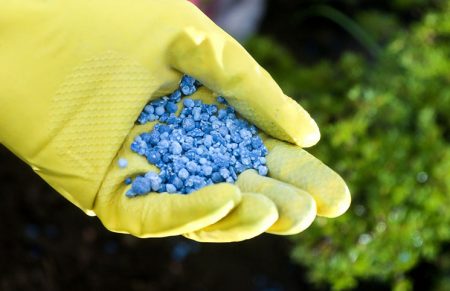
When using mineral fertilizers, one should take into account the fact that an excessive amount of nitrogen in the soil can accumulate in plants and fruits in the form of nitrates. Once in the body, nitrates, in some diseases, can be converted to nitrites - poisonous compounds, therefore, compliance with the dosage is necessary when preparing mineral fertilizers.
Feeding young strawberries
Young strawberry plantings made in the fall, in the spring you can not fertilize. But, if desired, you can apply top dressing in the form of a solution of 0.5 liter of infusion of mullein (chicken manure) and 1 st. l sodium sulfate in 10l. water. Consumption per bush - 1l.
Spring fertilizer for adult strawberry bushes
Strawberries, which have been growing on the plot for several years, need nutrients, since the soil is depleted without fertilizing and their deficiency affects the quality and quantity of the crop.
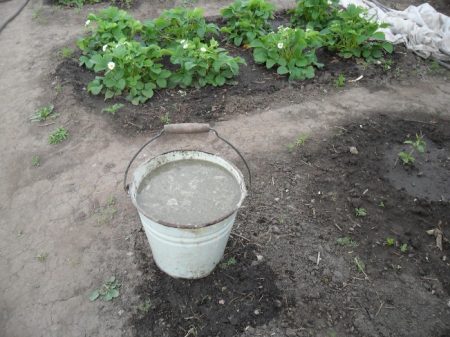
Feeding options:
- In spring, adult bushes can be fed with the same fertilizer as young plants, adding when loosening, before watering, 2 cups of ash per 1 m².
- A good effect is given by spraying the bushes during the growth period with nettle infusion.
- One of the means: a mixture of mullein and water (1: 5), superphosphate solution (60g per 10l), ash solution (100-150g per 10l) pour into grooves, 4-5cm deep, dug around the bush. Then sprinkle grooves with earth and pour water. Fertilizer consumption for 3-4m length - one bucket.
- For feeding two-year-old strawberries, ammonium nitrate is suitable - 100 g per 10 m².
- For three-year bushes, use a mixture of superphosphate (100g), potassium chloride (100g) and ammonium nitrate (150g) on 10 m².
Before flowering begins, in the evening spray the bushes with a solution of boric acid (2 g), ash (1 tbsp.), Manganese (2 g), iodine (1 tbsp.) In 10 l of hot water.
The wise use of various options for feeding strawberries in the springtime will lay the foundation for a good harvest. It is important to remember that you need to apply any fertilizer according to the dosages so as not to harm, subsequently, your health.

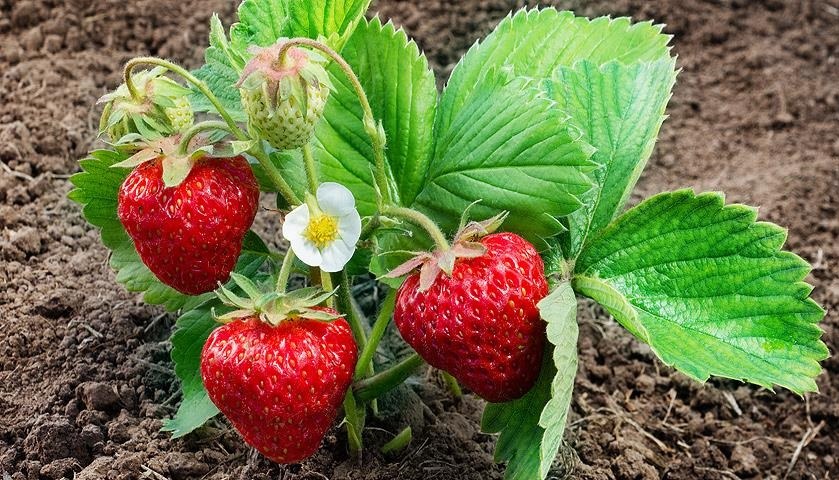
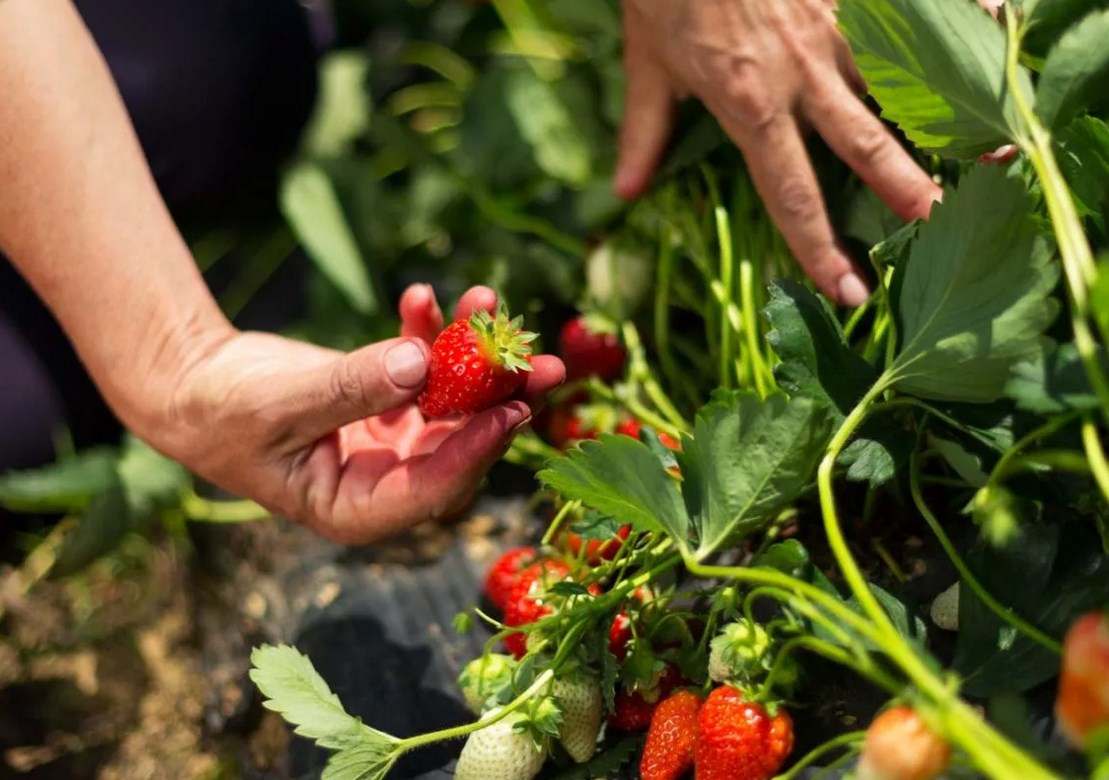
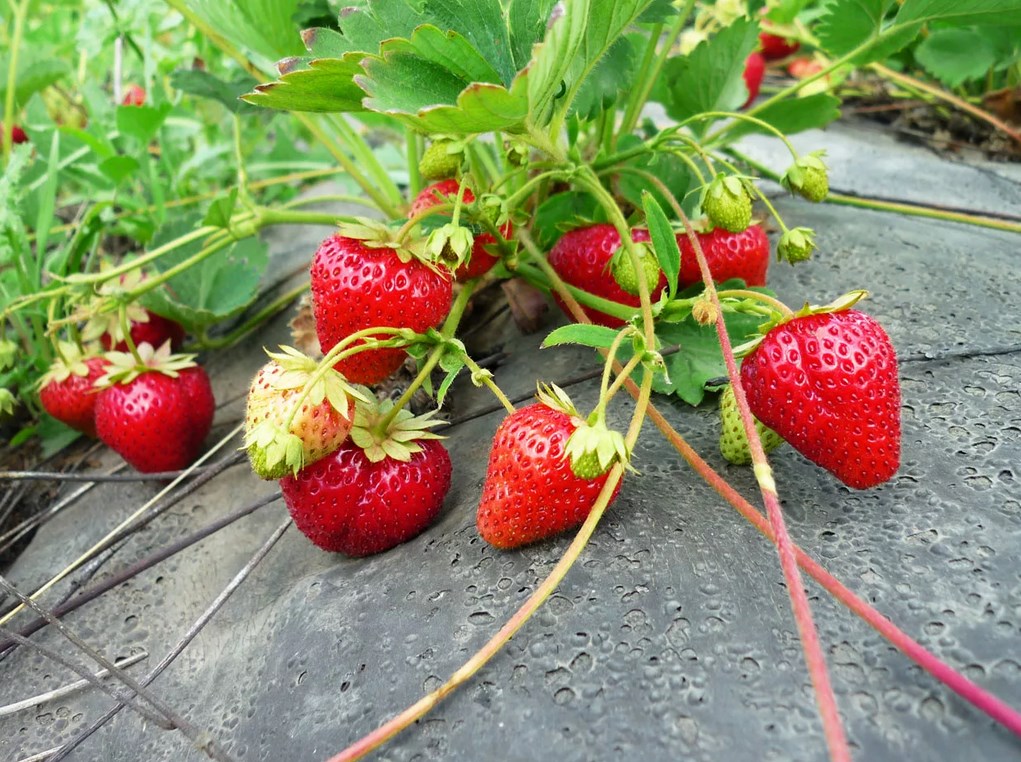
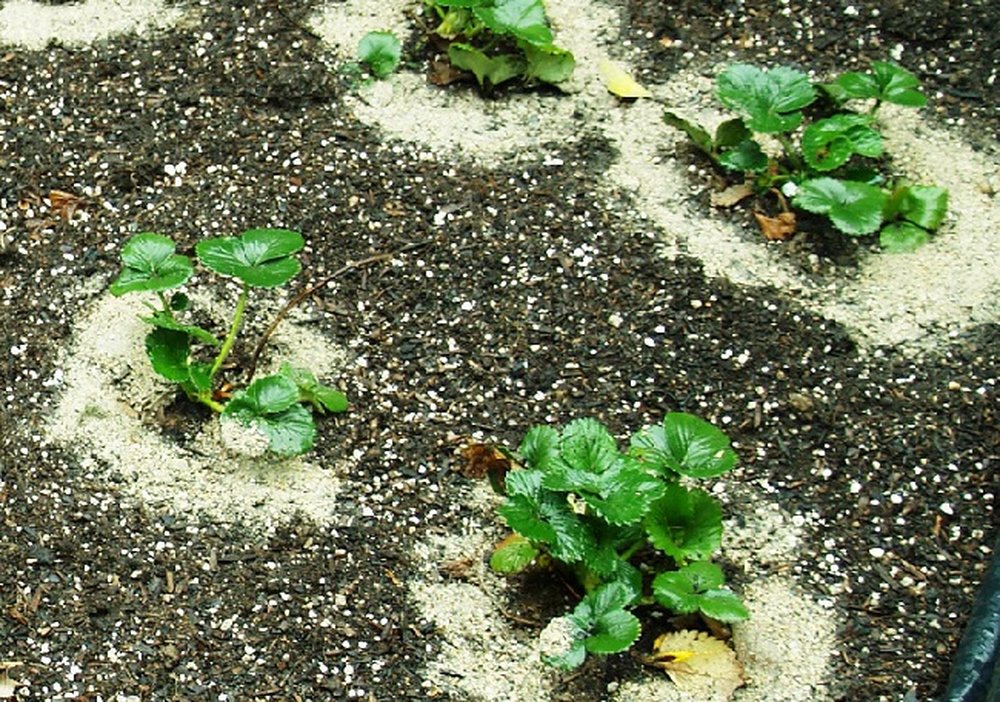 When to plant strawberries for seedlings from seeds in 2024
When to plant strawberries for seedlings from seeds in 2024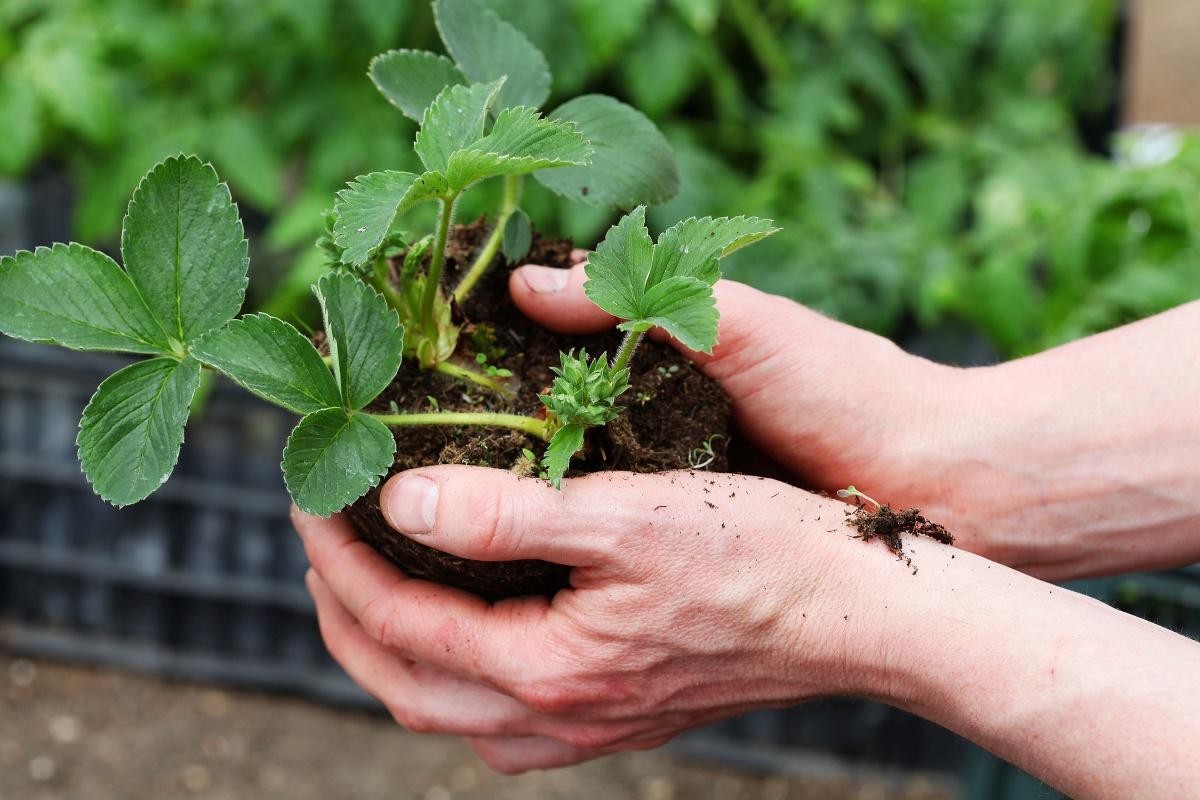 What month is better to choose for a strawberry transplant in the fall
What month is better to choose for a strawberry transplant in the fall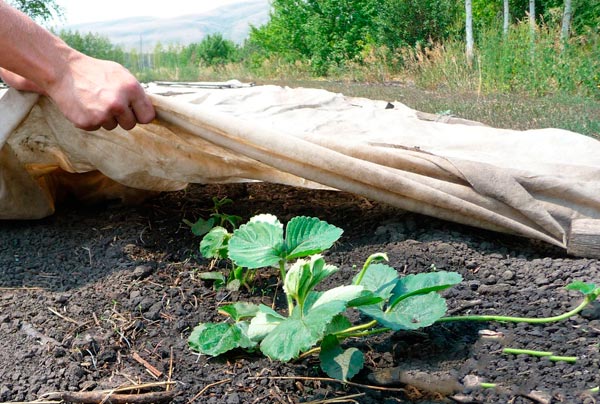 How to cover strawberries for the winter
How to cover strawberries for the winter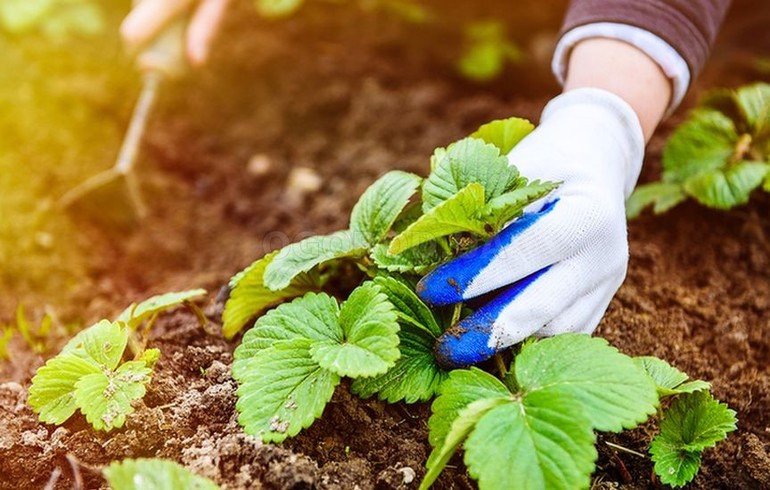 Proper care and pruning strawberries in the fall in the suburbs
Proper care and pruning strawberries in the fall in the suburbs
Thanks for the information. Useful.
Lyudmila
Thanks for the useful information.
Thank you very much
Alex
Thank! Very good and helpful article!
Irina
Strawberry. DIY garden
Galina Swan
Class